Nest Learning Thermostat (4th Generation) Review
The Nest Learning Thermostat is getting even better with the fourth generation model.
Pros
- Stunning design
- Matter support
- Very easy to use
- Supports a wide range of systems
- Comes with temperature sensor
Cons
- Display could be brighter
| Buy From | List Price | Sale Price | |
|---|---|---|---|
| $279.99 | $279.99 | See It |
Nest is finally back. The original Nest Learning Thermostat was a huge moment in the smart home. It took the classic, ugly, dumb thermostat, and completely flipped the concept on its head — offering a stunningly well-designed device that simultaneously helped you save money. Nest launched a few new iterations, but the last model was released all the way back in 2015. That is, until now — the Nest Learning Thermostat (4th Generation) brings the device into the modern smart home, with an all-new design, and even more advanced features.
But just how much better could the new device possibly be? After all, the last model is still perfectly operational in many homes around the world—and it shows no signs of slowing down. Should those homes make the switch to the new device?
A stunning new “floating” design
Let’s get one thing out of the way: The 4th-gen model of the Nest Learning Thermostat is absolutely stunning. It still has a round build, and you can still rotate its frame to control it, but apart from that, it looks pretty different from previous models.
A big part of that comes from the floating look. The thermostat has a base that extends out from your wall, with a larger glass display that, from certain angles, makes it look like it’s detached from the wall. Housed under that glass is a large display surrounded by a glossy metallic frame.
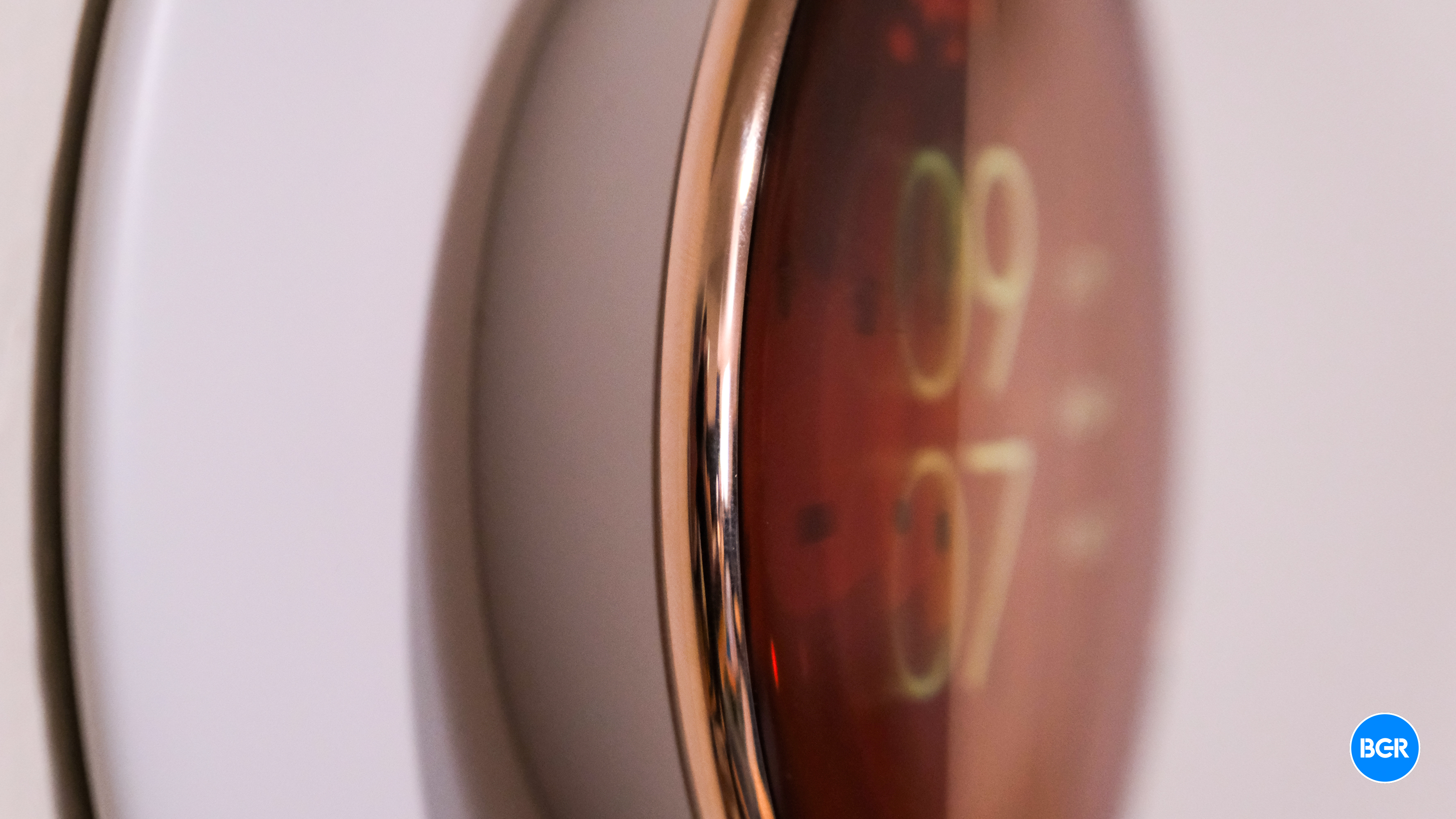
If you think the design looks familiar in Google’s ecosystem, you’re right. Google says the design of the device was inspired by the Google Pixel Watch, and indeed, the device does look like an oversized Pixel Watch. That’s a good thing.
There is one thing I don’t love about the design, though. The ultra-glossy glass helps make the device look more premium, but it does nothing to reduce glare — and if you’re in the wrong spot, the light in your home can render the screen invisible at a distance. That’s a bit annoying considering Google’s focus on its so-called Dynamic Farsight technology that displays information on the screen from a distance. I was hoping to use the device like a clock like I did the Ecobee thermostat I had before — but from my spot on the couch, I couldn’t see the screen.
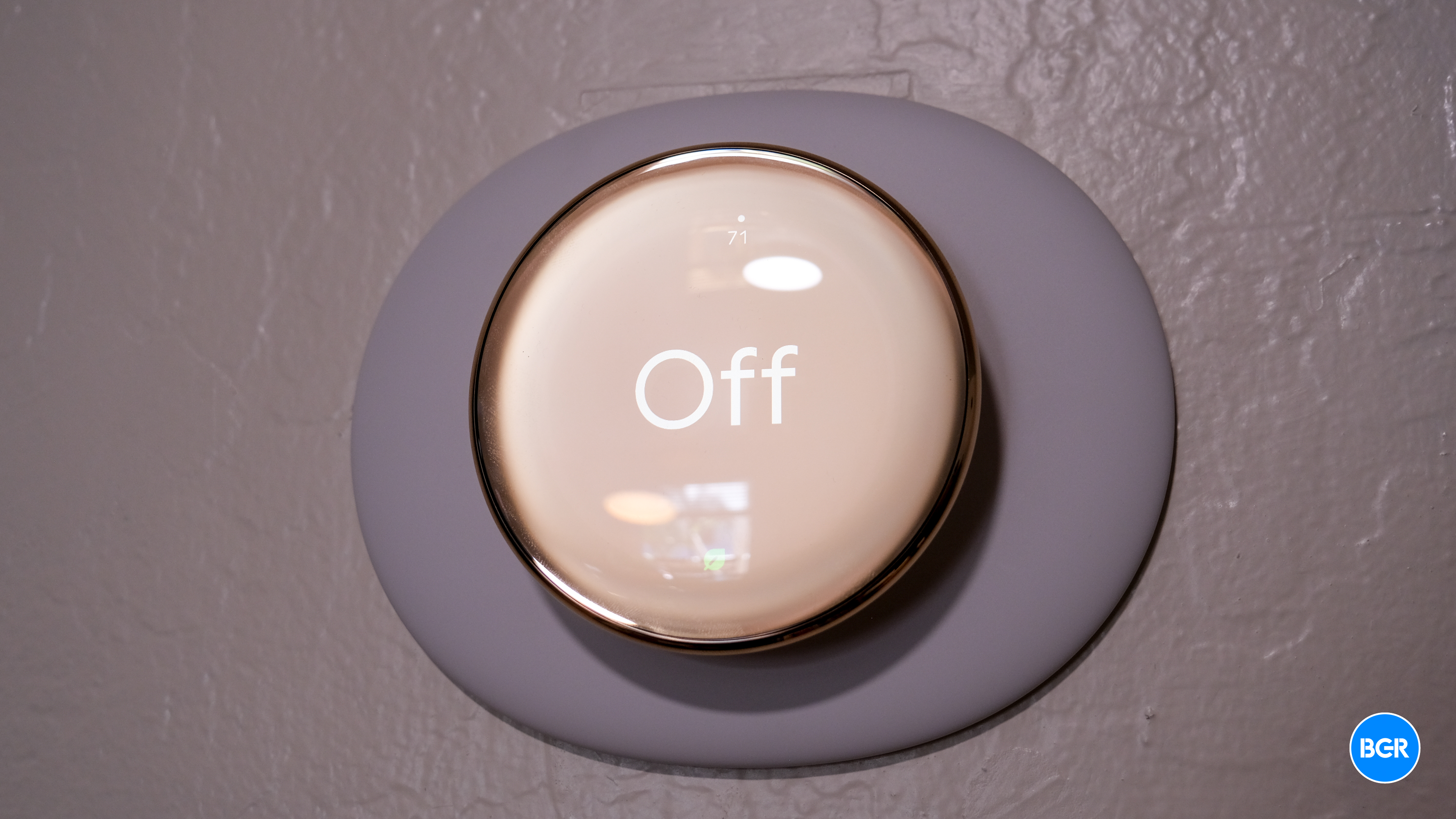
That said, I still love the look of the device. It’s relatively easy to install too, and I’ve long appreciated the fact that it doesn’t need a C-Wire to be powered. This is a big deal for older homes with two wires, and my Ecobee required a power adapter that I had to plug into a power outlet, resulting in a wire that ran up my wall. It was a bad look, but the Nest Learning Thermostat fixes that.
Smart features in smarter homes
As you would expect, the thermostat is packed with features that can help you save money on energy and make your thermostat a more helpful device beyond simply controlling your home’s temperature.
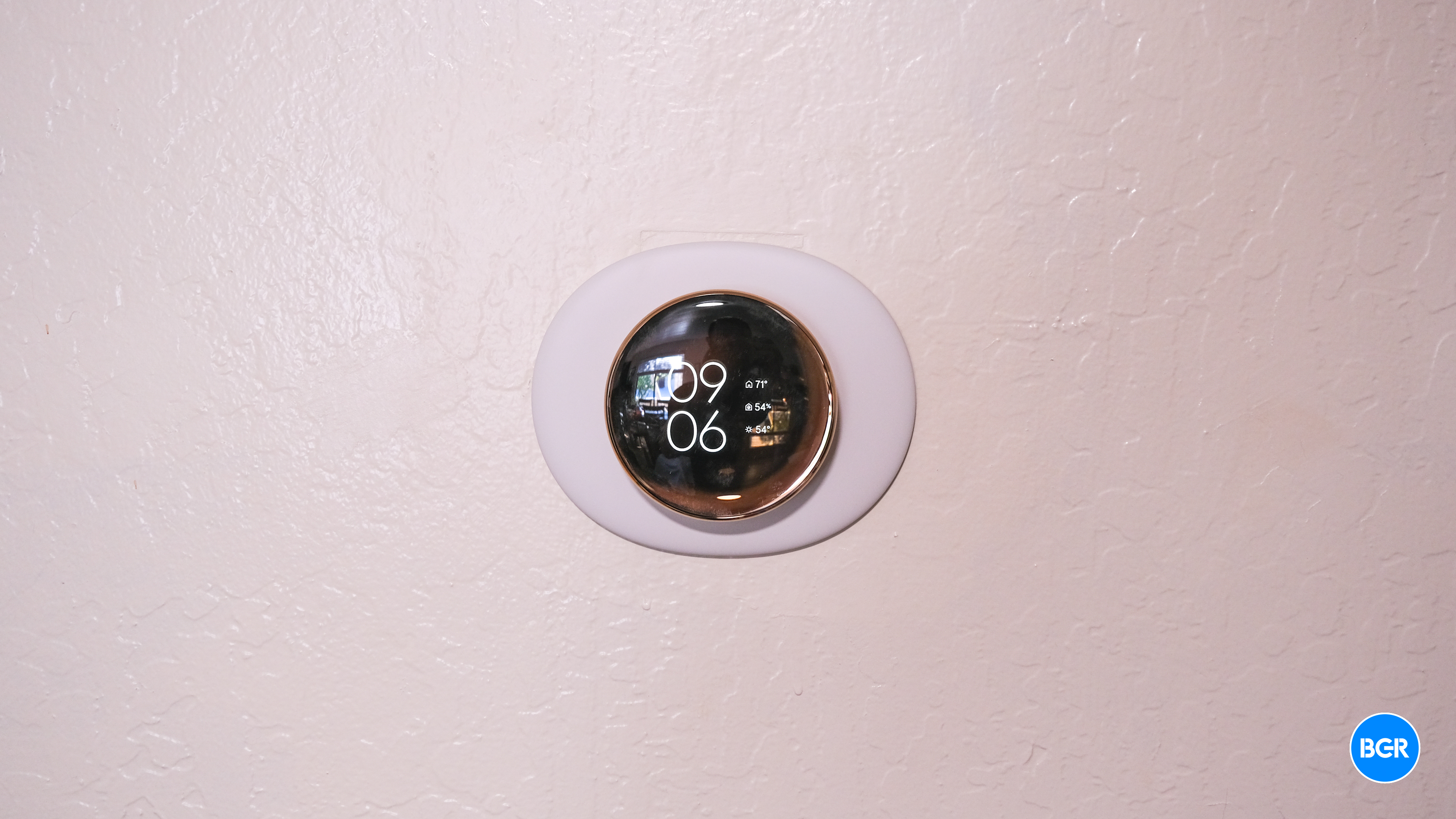
To be clear, the temperature-controlling features are there. As we would expect, the thermostat can still learn your routine, and adjust temperature automatically based on that routine. Or, it can be scheduled manually if you prefer. For the new model, however, Google is emphasizing the device’s better understanding of how and when your home heats up and cools down naturally. This can help further save energy, as it avoids the thermostat heating up the home soon before it would heat up on its own, for example.
The device also works with a remote sensor, and it comes with one in the box. This has proven very helpful for me, as my home has two levels that vary dramatically in temperature, especially in the summer. With the thermostat on the top floor, I can have the remote sensor on the bottom floor, and have the thermostat make adjustments with both locations in mind.
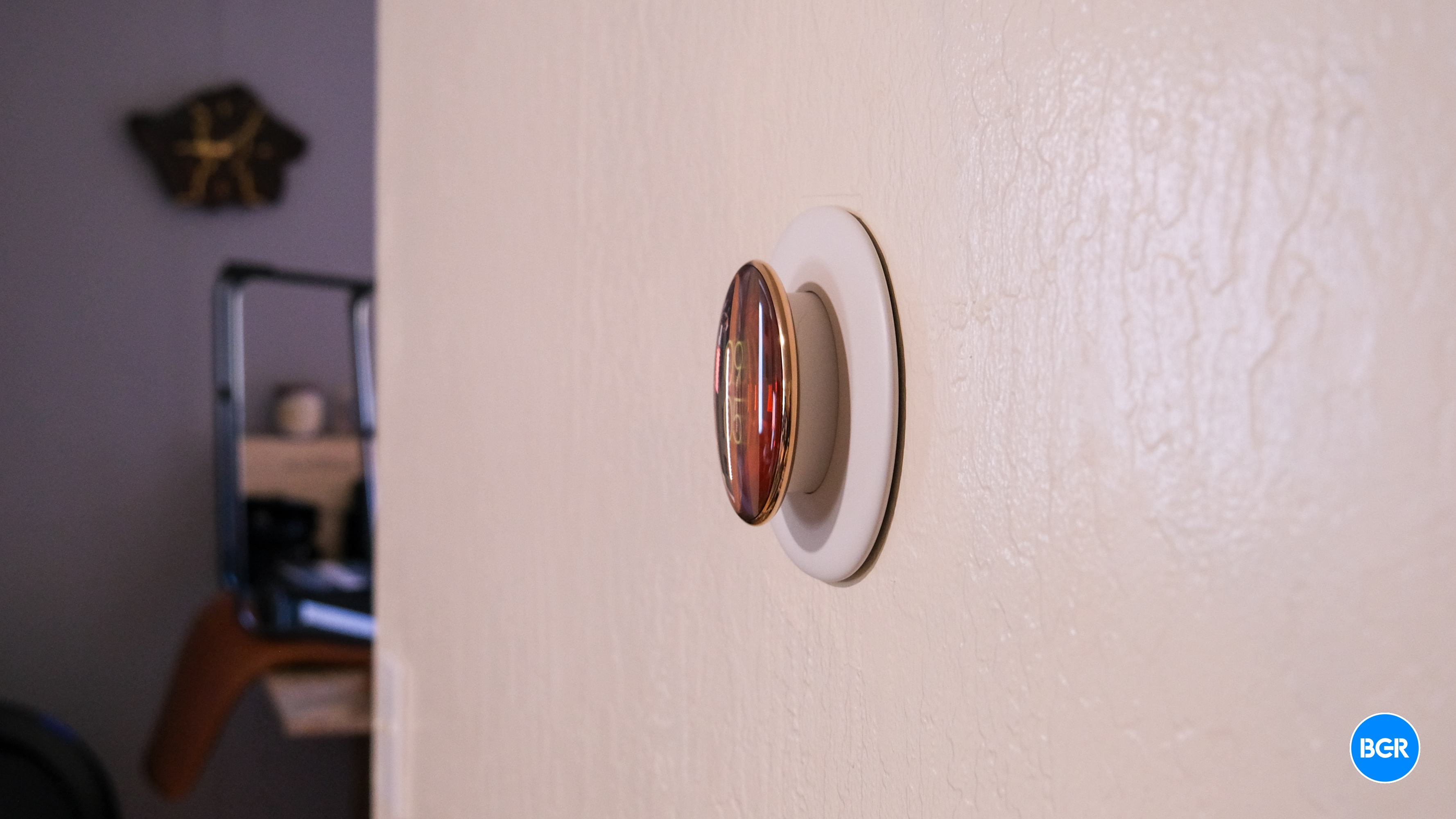
It’s a better addition to a wider array of smart homes too. For this generation, the flagship Nest thermostat finally supports Matter. The result? I can set it up to be controllable in HomeKit, allowing my wife to control the temperature manually without forcing her to download an extra app. You’ll still have to set the device up in the Google Home app, but having Matter support is hugely helpful.
Intuitive software and simple controls
The software actually built into the thermostat has gotten a revamp too, and it also looks stunning. The basics are still there — when you approach the thermostat, you’ll see the temperature in your home and be able to control it simply by turning the outside ring. Push in, and you’ll be taken to a menu where you can access settings, modes, and more. I did find the display to be a little too dim — even without glare, it can sometimes be slightly hard to read, and a brighter screen would help.
As mentioned, there’s also a new Dynamic Farsight mode that can display information at a glance, and I think it’s a great addition. You can set the thermostat to show things like the time, the outside temperature, humidity, and so on. There are a few displays to choose from, and they all look excellent.
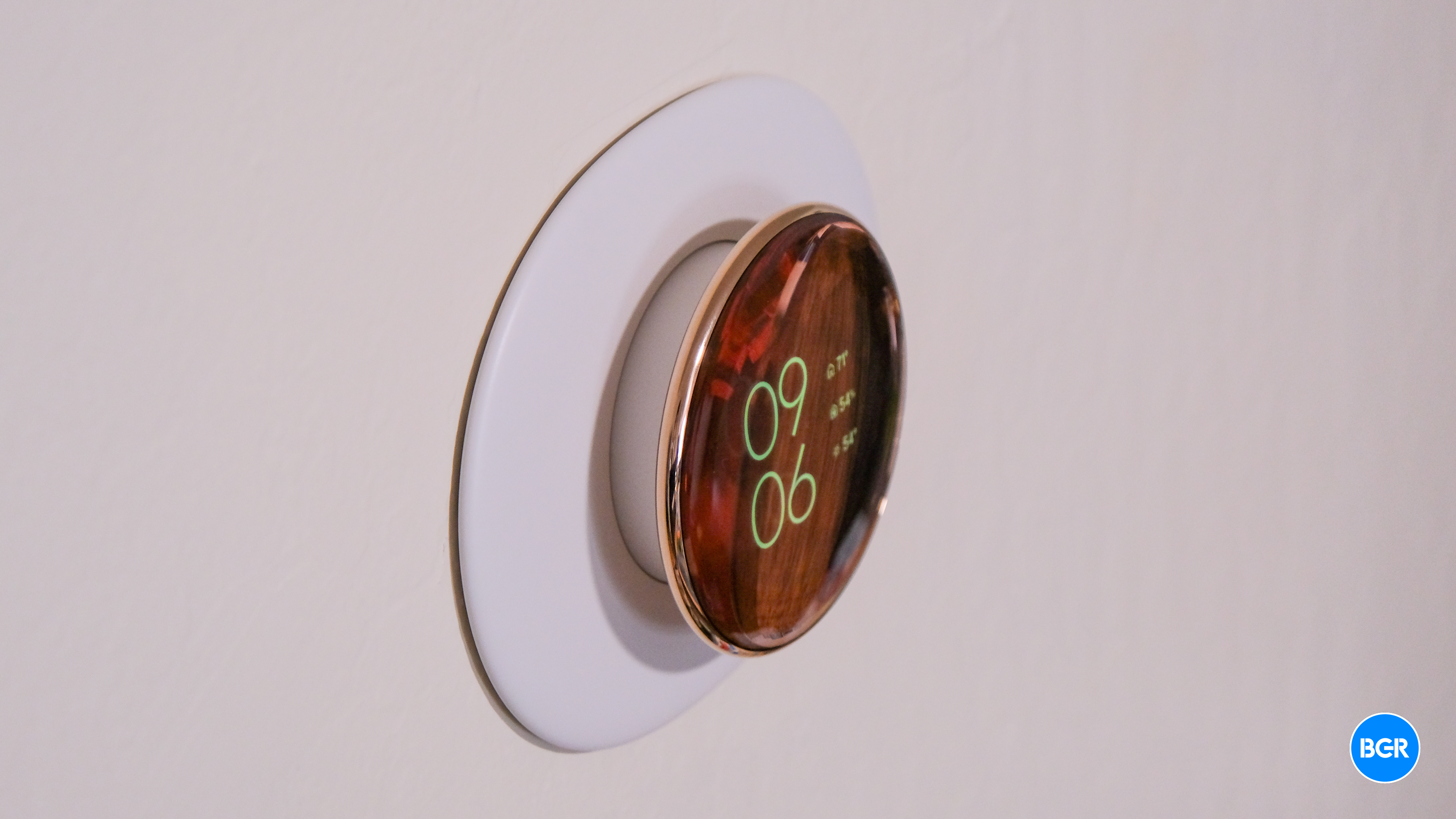
I do wish the mode could always be on, though. As mentioned, I was hoping to essentially use the thermostat as a clock, like I did the Ecobee thermostat I was using before the Nest. The Nest, however, shuts off the display when it hasn’t detected movement recently, which means that when I’m sitting on the couch, it won’t keep displaying the time unless I get up or start waving my arms around like I’m trying to trigger an old-school motion sensor. Of course, it’s unclear how an always-on display would impact energy usage, but if it was an option, Google could still warn the user.
The Nest Learning Thermostat has always been an example of intuitive controls, and that continues with the new model. Even though it’s different from previous models a little, I don’t think anyone moving from a previous-generation device will have trouble getting used to the new software.
A decently-designed app
As mentioned, the new Nest Learning Thermostat can be set up with Matter, allowing it to be controlled in any modern smart home ecosystem. That said, you’ll still have to set it up in the Google Home app, and there are plenty of settings you’ll need the app for.
The Google Home app has gotten a lot better over the years, and it’s reasonably intuitive. The app will walk you through the full installation, and help you troubleshoot if there are any issues. That helped me — it’s summer here, and I hadn’t realized that my furnace wasn’t getting power after numerous power outages in my area, thus not powering the thermostat. A quick reset of the outlet it was plugged into fixed the issue, and I was up and running.
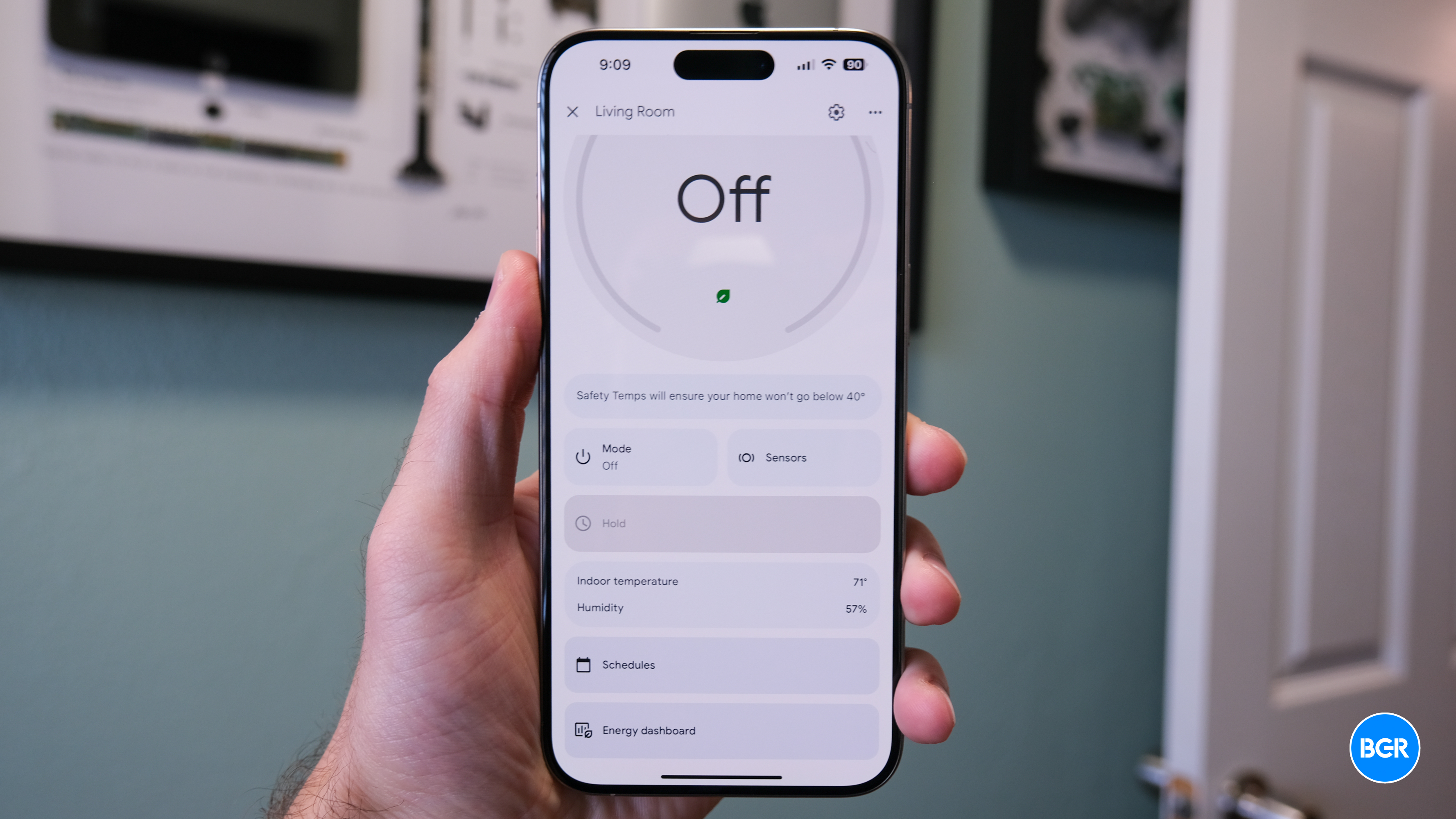
From the main screen of the Google Home app, you’ll see all your smart home devices and will be able to quickly tap on your thermostat to control its mode and see the temperature. Hit the settings button and you’ll get access to more. It’s intuitive and simple.
Conclusions
The Nest Learning Thermostat (4th Generation) is a worthy successor to the original model. It builds on previous generation Nests with a number of meaningful new features, not to mention the fact that it looks absolutely stunning. Is that enough to justify an upgrade from the 3rd-gen model? Well, if you’re still perfectly happy with your Nest, perhaps not, unless you’d like to integrate it with a smart home ecosystem outside of Google. That said, some will find the design changes reason enough to upgrade, and anyone who does will love what the new device has to offer.
The competition
There’s plenty of competition in the smart thermostat space, but the Nest Learning Thermostat is still the way to go. That’s even more true with Matter support — though Ecobee users might miss the Siri integration that lets their thermostat act as a Siri controller.
If you’re deep in Apple’s ecosystem and really need Siri or Alexa built into your thermostat, then a device like the Ecobee Smart Thermostat Premium might still be the way to go. But, Ecobee devices don’t look anywhere near as good as the new Nest, and they’re not as intuitive to control. If all you want is the ability to control your thermostat in Apple Home, then go for the Nest device. You can still control it with Siri on other devices, and you could always supplement it with a HomePod Mini if you really need it.
Should I buy the Nest Learning Thermostat (4th Generation)?
Yes. It’s the best smart thermostat out there.








